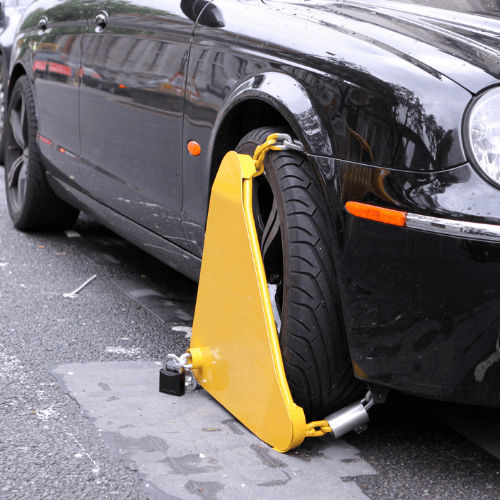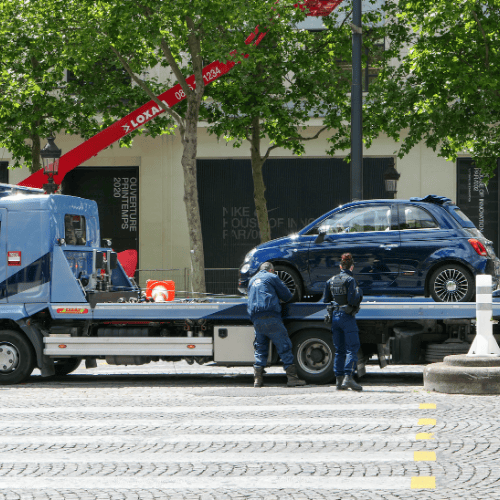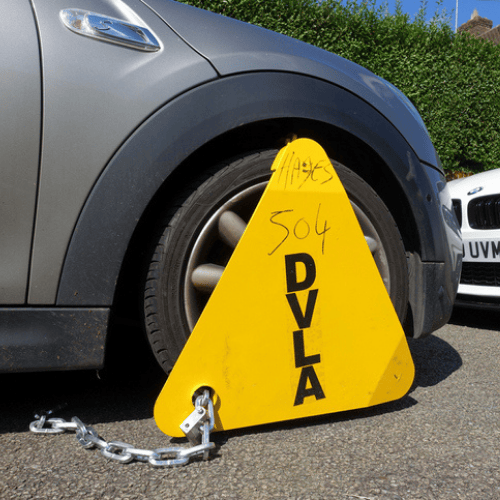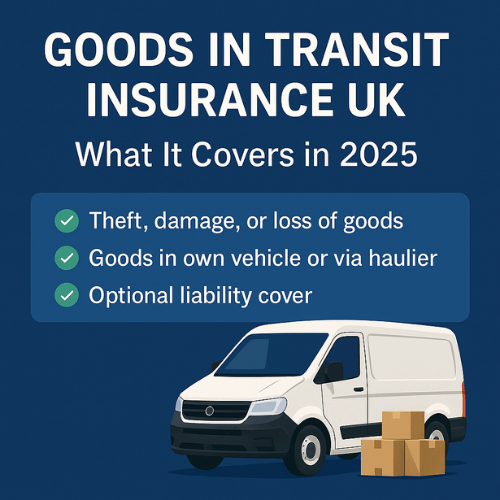Impounded Car Insurance in the UK: The Complete 2025 Guide to Getting Your Vehicle Back Fast
- Lindo Mavuso

- Jul 17
- 9 min read

Imagine this:
You walk out of your house, keys in hand, ready to head to work — and your car is gone.
Not stolen. Not towed for parking.
Impounded.
And just like that, your day turns into a frantic scramble to figure out what happened, what you’re supposed to do next… and most importantly: how to get your car back fast.
If that’s you right now, take a deep breath.
Because you’ve just found the only guide you need to navigate this situation with confidence.
Here’s what we’re going to cover:
What impounded car insurance actually is (and why regular car insurance won’t cut it)
Step-by-step instructions on how to release your car from the pound
How much it costs — and how to avoid overpaying
The truth about named driver policies, temporary cover, and 30-day rules
Common mistakes that cost people hundreds
Plus: insider tips to get your vehicle released as quickly and painlessly as possible
Whether the police seized your car for no insurance… or a DVLA issue caught you off guard… this guide was built for you.
No fluff. No jargon. Just answers, action steps, and real talk from the experts at UK Sure — specialists in impounded vehicle cover with thousands of happy drivers back on the road.
Let’s get started.
What Is Impounded Car Insurance and Why Do You Need It?
Let’s get one thing straight:
You can’t get your car out of the pound without the right insurance policy.
That means your regular car insurance — even if it’s fully comprehensive — won’t work in most cases. Why? Because once your vehicle’s been seized, it enters a different legal category. Now you need a specialist policy tailored to meet police and DVLA release requirements.
That’s where impounded car insurance comes in.
It’s a short-term policy (usually 30 days minimum) that proves your car is insured properly at the time of release. Without it, the compound won’t hand you back the keys.
Important: Even if you’re planning to scrap the car or move it to a garage, you still need this insurance to release it. No policy = no release.
Why You Can't Just Use Temporary Cover
Many people search for temporary car insurance , thinking it’ll do the job. Makes sense — you’re only trying to get your car back, right?
But here’s the catch:
Most temporary policies (those lasting 1–7 days) are not valid for impound release. In fact, some insurers explicitly exclude impounded vehicles in the small print.
That’s why UK Sure offers policies that are purpose-built for impounded car recovery — not just short-term insurance slapped with a fancy label.
And if you’re not the registered owner but a named driver trying to help a family member or partner?
We’ve got you covered too with our specialist Named Driver Impounded Insurance product — something most insurers won’t even touch.
A Quick Note on What Causes a Vehicle to Be Impounded

If you’re wondering why your vehicle was seized, here are the most common reasons in 2025:
Driving without valid insurance
Being disqualified from driving
Driving without a valid licence
Parking violations + unpaid fines (in some cases)
Vehicle linked to a crime or illegal activity
No valid road tax (DVLA clamp and seize)
If any of the above rings true, don’t panic.
The rest of this guide will walk you through exactly what to do next — and how to make sure you’re 100% ready when you head to the impound lot.
Can You Drive a Car After It Has Been Impounded?
Here’s a common myth we hear all the time:
“If I just get any insurance, I can drive my car away once I’ve paid the release fee.”
Wrong.
Driving an impounded car without the correct policy could land you right back in trouble — and your car right back in the pound.
Let’s break it down.
Your Regular Car Insurance Probably Won’t Cut It
Most standard policies exclude impounded vehicles in the fine print. Even if they don’t, police compounds will often ask for proof that:
Your policy is active at the time of release
The impounded vehicle is specifically listed on the policy
The cover is valid for at least 30 days
The insurer is authorised to cover impounded vehicles
That's why UK Sure provides a specialist Impounded Car Insurance policy that meets all police and DVLA criteria. It’s built specifically for release purposes, not just road use.
What If You’re Not the Registered Keeper?
Let’s say your friend’s car was impounded, and they asked you to collect it for them.
Good news: it’s possible — if you’re a named driver and have a valid insurance policy that includes impounded vehicle recovery. At UK Sure, we provide named driver impound policies that allow someone other than the registered owner to release the vehicle.
But be warned: many mainstream insurers don’t offer this, and showing up with the wrong documentation will get you turned away.
What Happens After the Vehicle Is Released?
Once your car is out of the pound, you’re legally allowed to drive it — but only if:
The vehicle is taxed (or you tax it immediately online at the impound desk)
You have a valid MOT (or can prove it’s on the way to a test)
You’re properly insured (your 30-day impound policy will cover this)
Driving off without meeting any of the above could land you in even more legal hot water — and possibly another impound situation.
So, if you're unsure, don't wing it. We always recommend calling ahead, confirming requirements with the compound, and getting your documents ready.
How to Release Your Vehicle from the Compound (Step-by-Step)

Getting your vehicle back isn’t just about paying a fine and picking up the keys.
There’s paperwork. Rules. Timelines. And if you don’t bring the right documents — or worse, show up with the wrong type of insurance — you’ll be turned away at the gate.
So here’s your guide to getting it done the right way.
Step 1: Confirm Why the Vehicle Was Impounded
Before anything else, figure out why your vehicle was seized. The most common reasons in the UK include:
Driving without valid insurance
No road tax (DVLA seizure)
Being disqualified from driving
Vehicle involved in a crime
Parking violations or unpaid fines (local councils)
This info matters because it affects what documentation you’ll need. For example, police seizures require different paperwork than DVLA impounds.
You’ll usually receive a seizure notice or police letter with instructions. Read it carefully.
Step 2: Get the Right Insurance Policy
This is where most people slip up.
You can’t just bring any insurance. The policy must:
Be valid at the time of release
Last at least 30 days
Cover impounded vehicle recovery
Be in the name of the registered keeper (or have a valid named driver arrangement)
That’s why we recommend using a specialist policy like our Impounded Car Insurance or, if you're not the owner, the Named Driver Impounded Policy.
Tip: Print your insurance certificate and bring it with you. Some compounds won’t accept digital-only proof.
Step 3: Gather Your Documents
Before heading to the pound, make sure you have:
Your photo ID (driving licence or passport)
Your proof of address (utility bill or bank statement)
Your V5C logbook (or new keeper supplement with a bill of sale)
Your valid insurance certificate
The police seizure notice or DVLA letter
Proof of MOT (or appointment if driving straight to a test)
Missing even one of these can delay your release by days.
Step 4: Pay the Impound Fees
Expect to pay:
£150–£200 release fee
£20–£25 storage per day
Possible admin fees (depending on the police force or authority)
Want a full breakdown of these costs? Check out our post:Car Impound Charges: How Much You’ll Need to Pay
You’ll usually pay at the compound or designated police station — bring card AND cash, as some locations don’t accept one or the other.
Step 5: Drive Away (Legally)
If everything checks out, they’ll release the vehicle to you on the spot.
Double-check before leaving:
You’ve taxed the vehicle (can do online)
You’re driving it to an MOT test if needed
You’re listed as a named driver if not the registered owner
If any of those boxes aren't ticked, don’t drive away — arrange for a recovery truck or transporter.
How Much Does Impound Insurance Cost in the UK?
Here’s the question everyone wants answered:
“How much is this going to cost me?”
The short answer?
Expect to pay between £180 and £350 for a 30-day impound insurance policy in 2025.
But as with most things in insurance, the real answer depends on a few key factors.
Let’s break it down.
The Average Cost of Impounded Car Insurance
At UK Sure, we’ve handled hundreds of impounded vehicle cases, and based on 2025 policy data, here’s what we’ve seen:
Factors That Influence the Price
Your final quote will depend on:
Your age and driving history
Where the vehicle was impounded (postcode risk)
The type of vehicle (make, model, year)
Whether you’re the owner or a named driver
Whether you choose optional extras like legal cover or breakdown (available at UK Sure)
Want a precise quote in seconds? Visit our Impounded Insurance Quote Form to get started — no lengthy calls or paperwork.
Real-World Example
Let’s say your vehicle was impounded in London due to a no-insurance offence.
You’re 31 years old, clean licence, and the car is a 2016 Ford Fiesta.
At UK Sure, that driver would typically pay:
£204 for a 30-day standalone impound release policy
Add £19.99 for optional legal expenses cover
Total: £223.99 — quote delivered instantly via email, valid for 48 hours
That’s significantly cheaper than many comparison sites, which often inflate premiums above £300+ or reject impounded vehicle applications altogether.
Want to Save on Costs?
Here are a few proven tips:
Avoid comparison sites — most don’t support impounded vehicles properly
Don’t wait — storage fees add £20–£25 per day, so every delay costs you
Bundle wisely — if you need legal expenses or breakdown cover, get a combined quote through Bolt-Ons
Use an FCA-authorised broker — like UK Sure — to avoid rejected policies
Can You Get Impounded Insurance as a Named Driver?
Here’s a situation we see all the time:
“My partner’s car was impounded, but they’re out of the country. Can I collect it on their behalf?”
Or...
“It’s my mum’s car, but I’m the only one who can physically go to the compound.”
In both cases, the solution is the same: Named Driver Impounded Insurance. And yes — it is possible. But only if you do it right.
Most Insurers Say No — Here’s Why
Most traditional insurers won’t offer impounded car policies to anyone other than the registered keeper. Their systems are designed for regular road insurance, not the edge-case reality of police impounds.
If you try to show up with a standard policy as a named driver, you’re likely to be turned away — even if it’s technically valid.
That’s why UK Sure developed a product specifically for this purpose: Named Driver Impounded Insurance
Who Qualifies for Named Driver Cover?
To use this type of policy, you must:
Be listed as a named driver on the impounded vehicle
Have a valid UK driving licence
Be over the age of 21
Be able to provide proof of relationship with the registered keeper (sometimes requested)
Once approved, you can collect the vehicle from the pound legally, provided all documents are in place.
Pro tip: If you're unsure about your eligibility, call UK Sure directly. Their bilingual agents (English, Portuguese, Polish, and Spanish) will walk you through it in your preferred language.
What Documents Will You Need at the Compound?
Even with the right insurance, you’ll need:
A printed insurance certificate (showing your name and vehicle registration)
Photo ID (driving licence)
A letter of permission or seizure notice addressed to you
MOT proof and V5C logbook
Why UK Sure Is One of the Few That Offers This
Most brokers avoid named driver impound cover because:
It’s high risk
It involves manual approval
Most customers aren’t aware it exists
But at UK Sure, it’s one of our most requested services — especially for customers dealing with urgent family situations or overseas vehicle owners.
You can even request an instant quote online right here: Named Driver Impound Quote Form.
How Long Does the Insurance Policy Need to Last?
You might be thinking:
“I only need insurance to drive the car out of the pound. Can’t I just get a 1-day policy?”
Unfortunately, no.
When it comes to impounded vehicle release, the police and DVLA don’t play around. In most cases, you’ll need a policy that lasts at least 30 days.

Here’s why.
The 30-Day Minimum Rule
To discourage drivers from “gaming the system” with one-day insurance, most UK police forces require:
A minimum 30-day policy
Issued by an FCA-authorised insurer
With explicit cover for impounded vehicles
Even if you’re not planning to drive the vehicle afterward — say, it’s going to be sold, scrapped, or towed — the rule still applies. No 30-day cover, no release.
That’s exactly what UK Sure’s impound insurance is designed for.
What Happens After the 30 Days?
You’ve got a few options:
Convert to standard road insurance if you plan to keep the car
Let the policy expire if you no longer need the vehicle (after scrapping, sale, etc.)
Speak to UK Sure about converting to another product like temporary cover or car insurance quotes
Bonus Tip: Avoid Gaps in Cover
If you leave the car uninsured after it’s released, you may get hit with:
DVLA fines
Penalty points
A second impound!
So even if you think, “I’ll figure it out later,” trust us — sort your next step in advance.
Final Thoughts: Don’t Let Paperwork Stop You From Getting Your Car Back
Dealing with an impounded vehicle is stressful. But getting it back shouldn’t be a guessing game.
To recap:
You need a 30-day impound-specific policy
Regular insurance won’t work — and comparison sites won’t help
If you’re not the registered keeper, use a named driver policy
Bring all documents, pay your fees, and follow the process
Need help? UK Sure speaks your language — literally (English, Portuguese, Polish, and Spanish)
Ready to get your car back today? Get an instant quote and policy sent straight to your inbox: Request Your Quote Now.
























































Comentarios